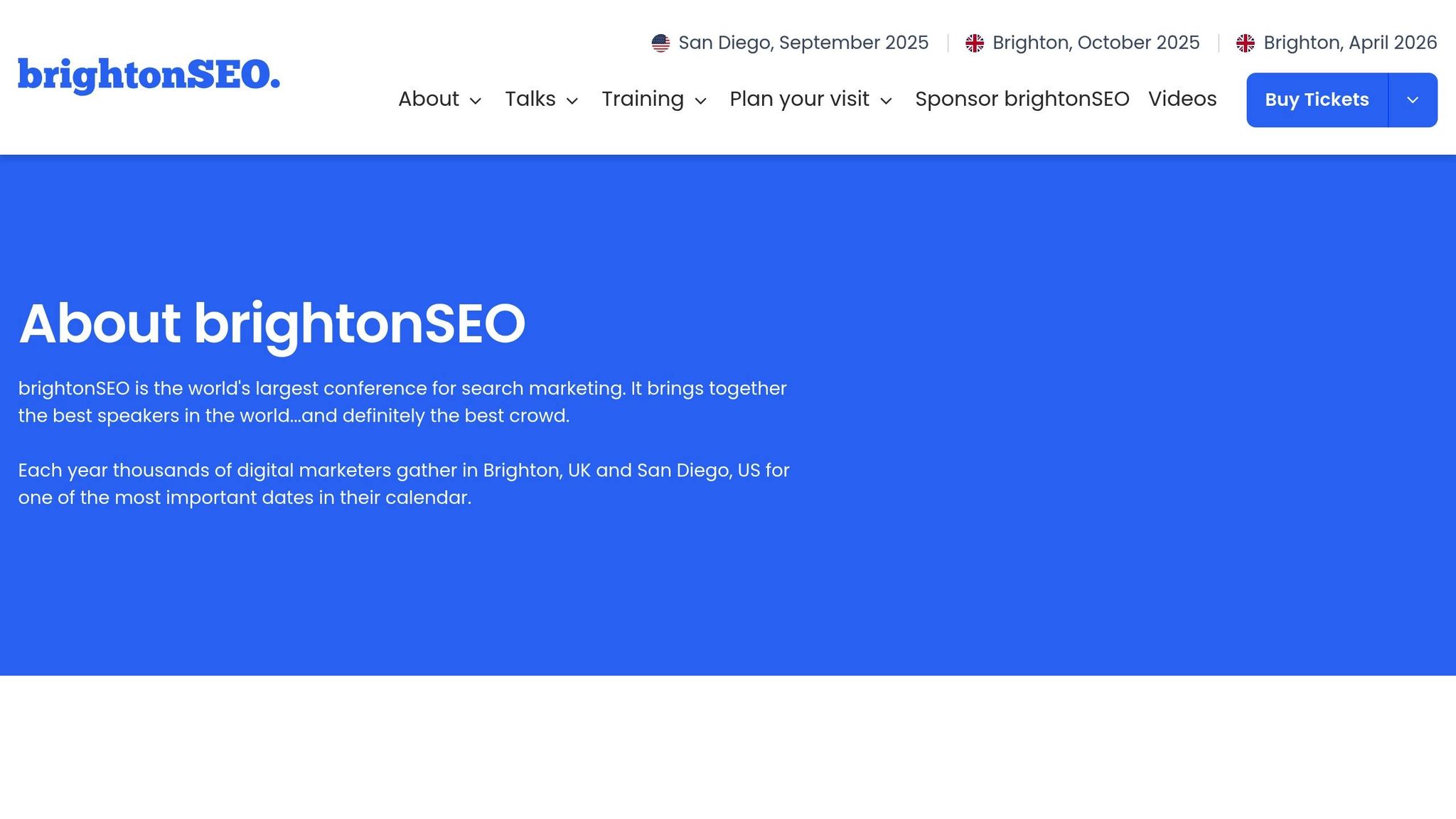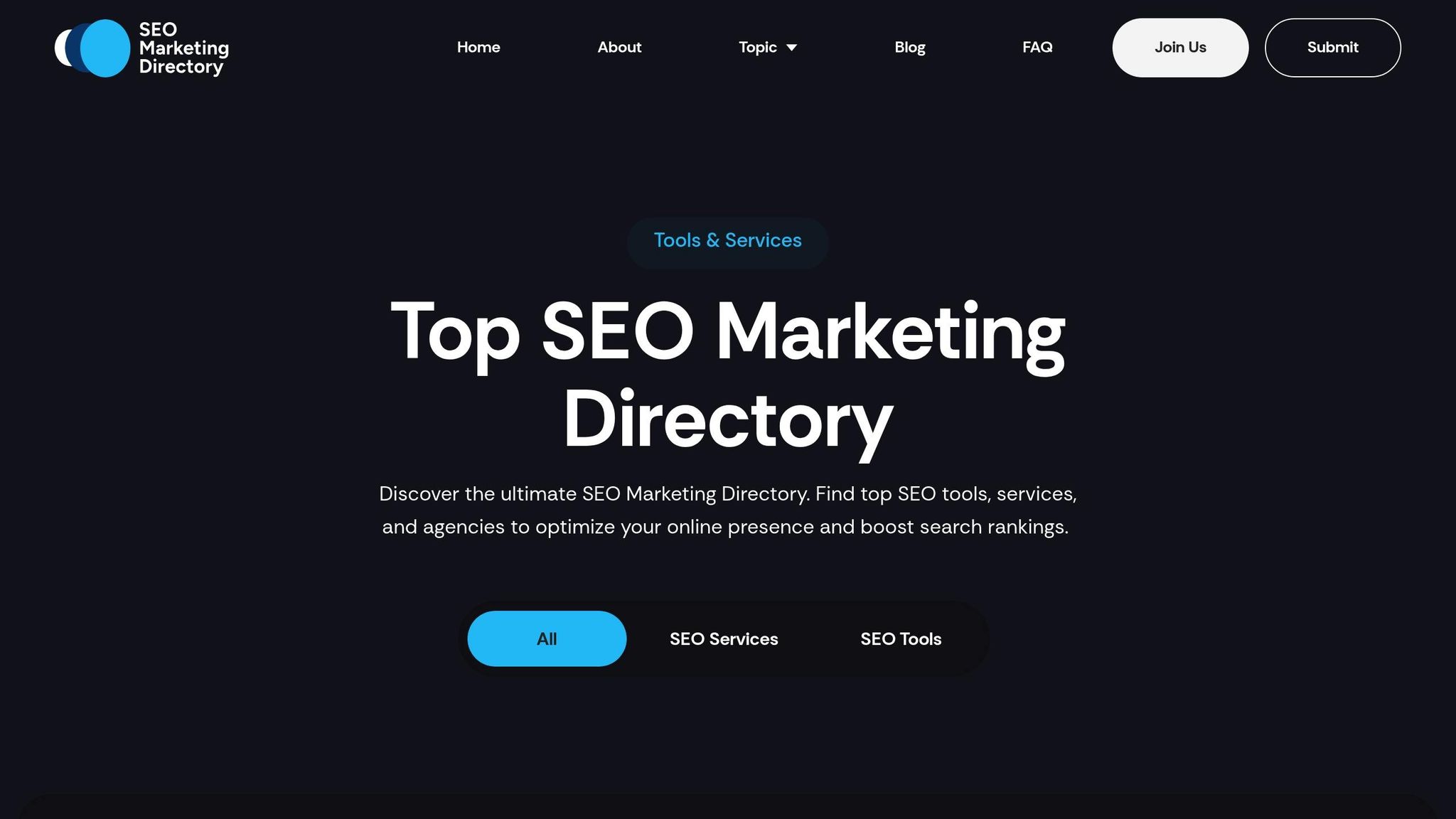Hreflang tags are essential for e-commerce sites targeting international audiences. They ensure customers land on the correct version of your site based on their language and location. Without them, users might face mismatched content, incorrect currencies, or unavailable shipping options, leading to poor user experience and lower conversions.
Key Takeaways:
- What Are Hreflang Tags?: HTML attributes that guide search engines to display the right localized page for users.
- Why They Matter: Prevent confusion, reduce bounce rates, and improve conversions by showing region-specific content.
- How They Work: Use ISO codes for languages (e.g.,
enfor English) and regions (e.g.,USfor the United States). Include bidirectional links between all language versions. - Implementation Methods:
- Add tags in the
<head>section for small sites. - Use HTTP headers for non-HTML files like PDFs.
- Opt for XML sitemaps for large catalogs.
- Add tags in the
- Common Mistakes to Avoid:
- Missing self-referencing tags.
- Broken reciprocal links.
- Incorrect language or country codes.
- Faulty URLs or inaccessible pages.
- Tools for Management:
- Google Search Console: Diagnose hreflang issues.
- Screaming Frog: Audit large sites for errors.
- ContentKing: Monitor hreflang changes in real time.
Proper implementation ensures localized content reaches the right audience, boosting SEO performance and user satisfaction.
XML + Hreflang: A practical guide for large ecommerce sites - Nick Samuel - brightonSEO April 2025

How Hreflang Tags Work
Hreflang tags guide search engines on which localized version of a page to display, ensuring users see content tailored to their language and location. Essentially, these tags act as a bridge between your website and search engines, providing clear instructions on which version of your content is most relevant for specific audiences.
When search engines crawl your site, they read these tags to map out your international content structure. This map helps them decide which page to show based on a user's language or geographical location. However, it may take some time for search engines to fully process and act on these signals.
To implement hreflang tags effectively, you need to focus on three key elements: proper syntax, using the x-default attribute strategically, and maintaining bidirectional links between pages. These foundational elements ensure your hreflang setup runs smoothly.
Understanding Hreflang Syntax
Hreflang tags use a specific format that combines ISO 639-1 language codes with ISO 3166-1 Alpha-2 country codes, separated by a hyphen. This combination allows precise targeting of audiences based on both language and location.
For example, hreflang="en-US" targets English speakers in the United States, while hreflang="es-MX" is for Spanish speakers in Mexico. The language code comes first, written in lowercase letters, followed by the country code in uppercase letters. A few examples:
- US: United States
- CA: Canada
- GB: Great Britain
- MX: Mexico
If your content is universally applicable to all speakers of a language, you can skip the country code. For instance, hreflang="fr" targets all French speakers, regardless of location. However, this works best for content that doesn’t vary by region - something rare in e-commerce, where factors like currencies and shipping zones differ.
To avoid unnecessary complexity, focus on your primary markets when setting up hreflang tags.
Using the x-default Attribute
The x-default attribute acts as a safety net for users whose language or location doesn’t match any of your specified hreflang tags. It directs them to a fallback page, ensuring they land on a logical starting point.
This is especially useful for e-commerce sites serving unexpected markets. For example, if your site has English, Spanish, and French versions, what happens when a visitor from Japan arrives? The x-default page ensures those users are directed to a general page rather than being randomly assigned to one of the localized versions.
Typically, U.S. e-commerce sites use their main English site for x-default. However, some global brands create dedicated international landing pages where users can choose their preferred language and region.
Here’s how it looks in practice: hreflang="x-default". This tag should sit alongside your other hreflang tags and point to the URL you want as a universal fallback. Keep in mind, though, that this fallback page should offer a good user experience. Visitors should be able to easily navigate to their preferred language or region.
A common mistake is using x-default for a language selector page with dropdown menus or flags. While this might seem logical, it often frustrates users by adding an extra step before they can access content. Instead, make sure your x-default page contains meaningful content while offering clear navigation options.
Setting Up Bidirectional Links
For hreflang tags to work correctly, they must establish bidirectional links - meaning every page referenced in a hreflang tag must also reference back to the original page. This confirms to search engines that your international content structure is deliberate and accurate.
Here’s an example: if your English U.S. page includes hreflang="es-MX" pointing to your Spanish Mexico page, the Spanish Mexico page must include hreflang="en-US" pointing back to the English U.S. page. Both pages also need self-referencing hreflang tags, such as hreflang="en-US" on the English page itself.
This bidirectional setup often catches e-commerce sites off guard, especially when managing hundreds or even thousands of product pages in multiple languages. Missing reciprocal links can lead search engines to ignore your hreflang signals, disrupting your international SEO efforts.
Large e-commerce platforms frequently encounter issues when adding or removing regional sites. For example, if you discontinue a German site but forget to update hreflang tags on your English and French pages, you’ll create broken links that confuse search engines.
To avoid these pitfalls, adopt a systematic approach to managing hreflang tags. Whenever you create or update an international page, immediately adjust all related hreflang tags to maintain consistent bidirectional relationships. This proactive approach prevents cascading errors that can undermine your SEO.
Many businesses streamline this process by using hreflang templates or automation tools to generate the correct tags. These tools ensure accuracy and reduce manual errors, making it easier to scale your international presence while keeping your hreflang setup intact.
How to Add Hreflang Tags to E-commerce Sites
Once you understand how hreflang tags work, the next step is setting them up correctly on your e-commerce site. You have three main options, each tailored to different site sizes and technical needs. The best choice depends on your site's complexity and technical setup.
For most e-commerce sites, starting with HTML link elements is a good first step. As your international reach expands, you can transition to XML sitemaps for better scalability. Here’s a breakdown of the three main methods for implementing hreflang tags.
Adding HTML Link Elements in the Head Section
Using HTML link elements is the simplest way to add hreflang tags. These tags go directly into the <head> section of each webpage, making them easy to implement. This approach works well for small to medium-sized e-commerce sites with a manageable number of localized pages.
Here’s an example of how hreflang tags look in HTML:
<link rel="alternate" hreflang="en-US" href="https://example.com/product/shoes" />
<link rel="alternate" hreflang="en-CA" href="https://example.com/ca/product/shoes" />
<link rel="alternate" hreflang="fr-CA" href="https://example.com/fr-ca/product/shoes" />
<link rel="alternate" hreflang="x-default" href="https://example.com/product/shoes" />
Every localized page must include references to all other versions, including itself. For example, an English U.S. product page should link to its Canadian English, French Canadian, and other language versions.
Place these tags immediately after the title and meta tags in your <head> section. This ensures search engines process them early during crawling.
If you’re using platforms like Shopify, you can add these tags in the theme.liquid file through the theme editor. For WooCommerce, you can insert them in the header.php file or use WordPress hooks for a programmatic approach.
One benefit of this method is that the tags are visible in the page source code, making it easy to verify and debug. However, as your site grows, managing these tags becomes more difficult. Updating hundreds of pages in multiple languages can lead to errors or missing links. This method is ideal for sites prioritizing ease of setup over long-term scalability.
Setting HTTP Headers for Non-HTML Files
For non-HTML files like PDFs, hreflang information is added via HTTP headers because these files don’t have a <head> section. Instead, the server includes hreflang data in the HTTP response using the Link header.
Here’s an example of the syntax:
Link: <https://example.com/catalog-us.pdf>; rel="alternate"; hreflang="en-US",
<https://example.com/catalog-ca.pdf>; rel="alternate"; hreflang="en-CA",
<https://example.com/catalog-fr-ca.pdf>; rel="alternate"; hreflang="fr-CA"
On Apache servers, you can configure HTTP headers using .htaccess files. For example:
<Files "catalog-us.pdf">
Header add Link '<https://example.com/catalog-us.pdf>; rel="alternate"; hreflang="en-US"'
Header add Link '<https://example.com/catalog-ca.pdf>; rel="alternate"; hreflang="en-CA"'
</Files>
For Nginx servers, you’ll need to modify configuration files to add headers. This requires server-level access and technical know-how, which can be a barrier for some site owners.
Testing HTTP headers is more complex than checking HTML tags. You’ll need tools like browser developer tools to inspect response headers. Additionally, if you use a content delivery network (CDN) such as Cloudflare, you may need to configure hreflang headers at the CDN level. This often involves advanced features like Workers or Page Rules, which may require a paid plan.
Using XML Sitemaps for Large Sites
For large e-commerce sites with thousands of localized pages, XML sitemaps are the go-to solution. Instead of adding hreflang tags to individual pages, you centralize all hreflang information in a sitemap file, making it easier to manage and update.
Here’s an example of hreflang implementation in an XML sitemap:
<url>
<loc>https://example.com/product/shoes</loc>
<xhtml:link rel="alternate" hreflang="en-US" href="https://example.com/product/shoes"/>
<xhtml:link rel="alternate" hreflang="en-CA" href="https://example.com/ca/product/shoes"/>
<xhtml:link rel="alternate" hreflang="fr-CA" href="https://example.com/fr-ca/product/shoes"/>
<xhtml:link rel="alternate" hreflang="x-default" href="https://example.com/product/shoes"/>
</url>
Each URL entry must include hreflang links for all localized versions. This ensures reciprocal links are maintained.
Platforms like Magento and BigCommerce often generate XML sitemaps automatically. Magento Commerce, for instance, includes built-in support for hreflang sitemaps, while Magento Open Source may require extensions or custom development. BigCommerce supports hreflang through its multi-storefront features, but advanced setups might need additional configuration.
There are a few things to keep in mind with XML sitemaps:
- File size limits: Keep each sitemap under 50MB and limit it to 50,000 URLs. For very large catalogs, you may need multiple sitemaps.
- Sitemap indexing: Use a master sitemap index file to reference all individual sitemaps. This helps search engines process your international content efficiently.
One downside of this approach is that search engines process sitemaps during separate crawling cycles. This means changes to hreflang tags might not be recognized as quickly as with HTML tags.
To ensure accuracy, use validation tools like Google Search Console. It can flag errors such as missing reciprocal links, incorrect syntax, or unreachable URLs. Regular checks are critical to avoid small issues snowballing into bigger SEO problems. XML sitemaps are best for sites that need scalability and centralized management.
sbb-itb-5be333f
Common Problems and How to Fix Them
Hreflang errors can disrupt the effectiveness of your international SEO efforts. Recognizing and addressing these common issues is crucial as your e-commerce site expands globally.
Most Common Hreflang Mistakes
Tackling these errors promptly ensures your international SEO strategy stays on track.
Missing self-referring hreflang tags is a frequent oversight. Every page needs a hreflang tag that points back to itself. For example, a U.S. product page at https://example.com/product/shoes should include <link rel="alternate" hreflang="en-US" href="https://example.com/product/shoes" /> along with hreflang tags for other language versions.
Broken reciprocal links can invalidate hreflang signals. If your U.S. English page links to a French Canadian version, the French page must link back to the U.S. version. Any time you add or update localized content, make sure all linked pages are updated accordingly.
Incorrect language or country codes can confuse search engines. A common error is using "uk" instead of "gb" for the United Kingdom or non-standard codes like "eu" for Europe. Stick to ISO 639-1 language codes (e.g., "en" for English) and ISO 3166-1 Alpha-2 country codes (e.g., "US" for the United States). Another frequent mistake is including only a country code without specifying the language, which provides incomplete information to search engines.
Faulty URLs can severely undermine your hreflang implementation. Avoid linking to pages that return 404 errors, server issues (5xx status codes), or redirects (3xx status codes). These errors signal to search engines that your international setup is unreliable.
Search engine accessibility issues arise when hreflang URLs are blocked by robots.txt files or tagged with noindex. This prevents search engines from accessing and understanding your international structure, rendering your hreflang setup ineffective.
Up next, we’ll explore how to maintain accurate hreflang tags tailored for U.S. e-commerce sites.
Tools for Managing Hreflang Tags
Managing hreflang tags can quickly become a daunting task as your e-commerce site grows. Automated tools are a game-changer, helping you maintain accuracy and efficiency as your site expands into multiple markets.
Best Hreflang Management Tools
Google Search Console is an essential tool for diagnosing hreflang issues. Its International Targeting report helps identify problems in your hreflang setup and international targeting strategy. While it might not catch every issue immediately, it provides valuable insights to refine your implementation.
Screaming Frog SEO Spider is ideal for crawling large e-commerce sites to uncover hreflang inconsistencies. It can process thousands of pages at once, flagging issues like missing self-referencing tags, broken reciprocal links, and incorrect URL structures. If your site manages over 10,000 products across multiple languages, this tool significantly reduces the manual effort involved.
Ahrefs Site Audit and SEMrush Site Audit both provide detailed reports on hreflang errors. They categorize issues by severity and offer actionable recommendations, making it easier to optimize your international site performance.
Merkle's Hreflang Tags Testing Tool is a free option for validating specific URLs. While it’s not designed for large-scale audits, it’s perfect for testing individual hreflang implementations before launching new international pages. It ensures your syntax is correct and your URLs are accessible.
ContentKing takes monitoring to the next level by tracking hreflang changes in real time. It alerts you immediately when issues arise, which is particularly useful for e-commerce sites with frequent product updates, price changes, or seasonal adjustments.
DeepCrawl is built for enterprise-level hreflang analysis. It excels in handling complex, multi-domain setups, offering detailed reports on cross-domain hreflang relationships and identifying issues that simpler tools might overlook.
These tools are indispensable for streamlining hreflang management, even for the most intricate international e-commerce setups.
Finding Help with Top SEO Marketing Directory

If you’re looking for additional support, the Top SEO Marketing Directory is a go-to resource. It provides a curated list of specialized tools and expert services to tackle international e-commerce SEO challenges, including hreflang management.
The directory connects you with professionals who understand the complexities of hreflang implementation for product catalogs, category pages, and dynamic content that changes based on inventory or regional pricing. For businesses with enterprise-level needs, premium listings offer access to advanced hreflang platforms and consultation services.
Additionally, the directory highlights analytics and optimization tools that complement your hreflang strategy by tracking international organic traffic and identifying opportunities for growth in global markets. It’s a valuable resource for finding the right solutions to navigate the challenges of international SEO.
Conclusion
We've covered the nuts and bolts of hreflang tags, highlighting their importance in tackling challenges faced by multilingual e-commerce websites. These tags are essential for international SEO success, helping businesses navigate issues like duplicate content and ensuring a seamless user experience for diverse audiences.
When implemented correctly, hreflang tags can deliver substantial benefits. They not only improve search rankings in local markets but also ensure users land on pages in their preferred language and tailored to their location. This reduces bounce rates and fosters a more engaging shopping experience. However, achieving these results requires consistent and accurate implementation, including bidirectional linking and the use of the x-default attribute to handle unexpected user locations.
Mistakes in implementation can undermine your efforts, making regular audits and monitoring crucial. By addressing these common pitfalls, you can safeguard both your search performance and your customers' experience.
Key Points Summary
Here’s a quick recap of what hreflang tags bring to the table:
- Better user experience: Localized content makes a big difference. For instance, German customers seeing your site in German with Euro pricing or U.S. visitors viewing English content with prices in U.S. dollars creates a smoother, more engaging experience.
- Stronger international SEO visibility: Hreflang tags guide search engines to display the right version of your pages to the right audience, boosting rankings in local search results and expanding your reach.
- Avoidance of duplicate content penalties: By signaling that similar pages across regions are intentional, you protect your site from SEO violations.
- Higher conversions and sales: Content that aligns with local preferences and cultural nuances resonates better with users, driving engagement and building stronger brand recognition.
Today’s tools make managing hreflang tags simpler than ever. From Google Search Console’s diagnostic features to advanced enterprise-level solutions, maintaining accuracy as your global presence grows is entirely achievable. For businesses ready to tackle more complex SEO challenges, resources like Top SEO Marketing Directory can provide additional support.
While hreflang tags require ongoing care, the effort pays off. Start with your most important markets, implement carefully, and build a solid foundation that will support your international growth for years to come.
FAQs
How do I properly set up hreflang tags on a large e-commerce site with thousands of products?
To implement hreflang tags effectively on a large e-commerce site, start by including a self-referencing hreflang tag on every page. This tells search engines the primary language and region for that specific page. Be sure to use absolute URLs and the correct ISO language and region codes to avoid errors or misinterpretations.
For larger sites, you can manage hreflang tags either through XML sitemaps or by adding them directly to the HTML <head> section of each page. Regularly auditing these tags is essential to catch issues such as missing return tags or incorrect language codes. Using automated tools or plugins can help streamline this process, ensuring consistency across thousands of product pages while boosting your site's international SEO.
What happens if you don’t use hreflang tags on an international e-commerce site?
Not using hreflang tags on an international e-commerce site can cause some serious SEO headaches. Imagine a user in Germany landing on the US version of your site instead of the German one - that’s exactly the kind of mismatch that can happen. This can lead to a poor user experience, lower traffic, and fewer conversions because visitors aren’t seeing the content that’s tailored to their region or language.
On top of that, without hreflang tags, search engines can get confused by the different regional versions of your pages. This confusion might trigger duplicate content issues, hurt your rankings, and make it harder to connect with your audience in specific markets. Adding hreflang tags helps search engines understand your site's structure, ensuring the right pages show up for the right users in the right locations. It’s a key step for improving multilingual and international SEO.
How does the x-default hreflang attribute enhance the browsing experience for users from unexpected regions?
The x-default hreflang attribute acts as a safety net for visitors from regions where your site doesn't have specific language or regional content. It ensures these users are directed to the most appropriate version of your site - often a global homepage - rather than landing on pages that might feel irrelevant or poorly localized.
By steering users toward a better-fitting option, this attribute helps create a smoother browsing experience. It can also boost engagement, lower bounce rates, and make your site more welcoming, even for visitors from regions you might not have specifically targeted.


